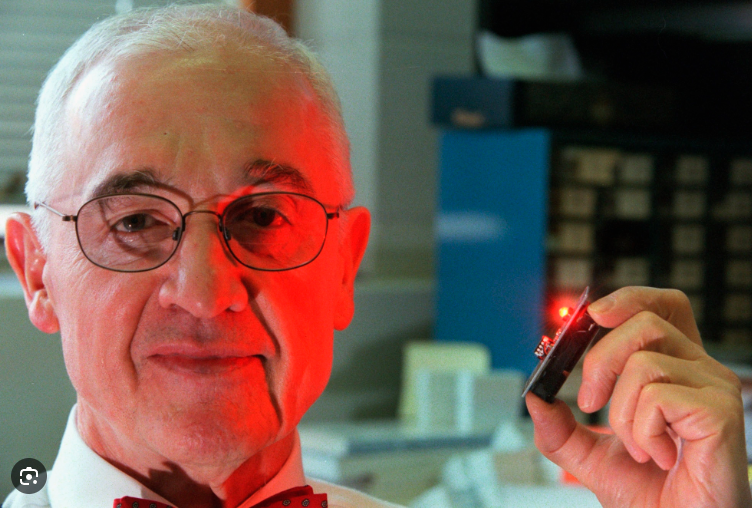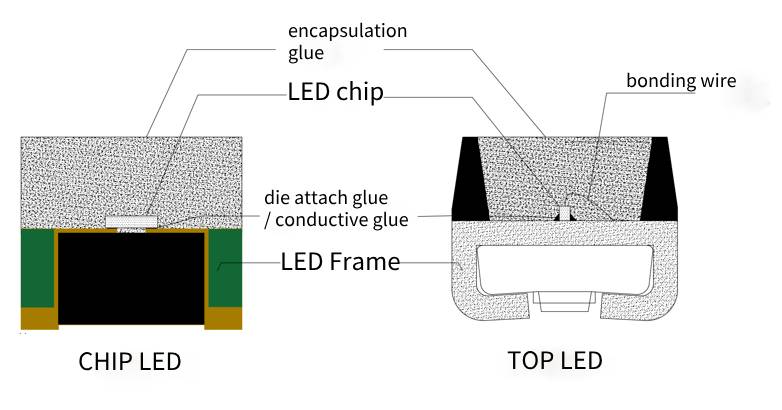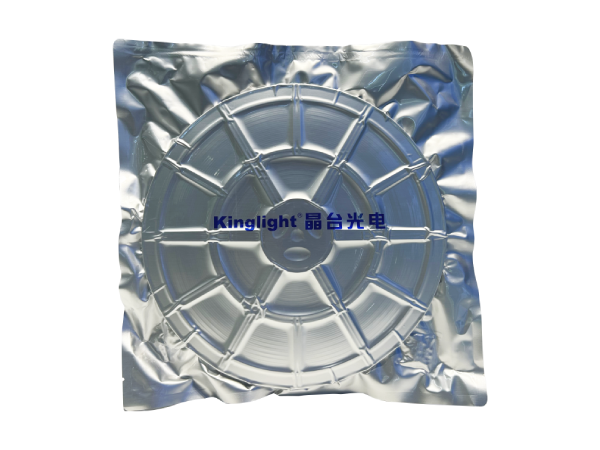Light-emitting diodes, briefly known as LEDs, have undergone a century of development since the electroluminescene phenomenon was observed in 1907. As LED technology continues to evolve and develop, it has been widely used in various fields and industries such as lighting and display screens as an efficient and energy-saving light source. Today, we will take a detailed look at LEDs, the history of LEDs, and all aspects of LED packaging.
1907
British scientists first observed the “electroluminescence” phenomenon in silicon carbide materials, but the light emitted was too dim to be used in practice.
1962
General Electric in US developed the first red visible light emitting diode. At that time, the light emitting diode was based on gallium arsenide and used phosphide doping to improve the luminous efficiency of the LED.

Nick Holonyak Jr. made the first red LED in 1962.
1980
With the advancement of vapor deposition epitaxial technology, LEDs made of ALGAInP materials can emit red, green, yellow and orange light.
1994
Japanese scientists developed blue LED using GaN substrate. Since then, RGB full-color LED display technology has developed rapidly.
As mentioned in the beginning, LEDs are energy-efficient light source. Meanwhile, LEDs also have other advantages such as small size, light weight, high brightness, fast response, low heat generation, and long life. That’s why LEDs are widely used in various sectors.
As a leading enterprise in LED packaging across China, Kinglight has launched a wide range of LEDs for displays with different application scenarios.
Kinglight LEDs for outdoor display feature with excellent performance such as ultra-high brightness, high energy efficiency, weather resistance, long life, etc. They cope well with complex and relatively tough outdoor conditions and can last a long time outdoors.
Kinglight LEDs for outdoor display mainly include 1112, 1515, 1820, 2727, 3535, etc.
Kinglight LEDs for indoor display include the 1415 and 2020 series, and excel in resolution, contrast, and display effect.
Kinglight LEDs for small-pitch displays include TOP1010 and 1212 series, which have smaller size and are commonly used for making small-pitch LED screens.
Kinglight MIP LEDs for micro-pitch displays adopts the more advanced MIP packaging technology, with flip-chip designs that no wire bonding is needed while packaging. MIP LEDs have more stable structure and excel in energy saving.
Currently, Kinglight MIP LEDs include MC0404, MC0505, MC0606 and MC1010, which are mainly used in the construction of ultra-high resolution LED screens.
LED is generally composed by LED frame, LED chips, die-attaching glue, conductive glue, packaging glue, bonding wires, etc. At present, Kinglight LEDs are packaged in two different designs, the CHIP LEDs and the TOP LEDs. Unlike TOP LEDs, CHIP LEDs utilize flip-chip structures, the LED chips are flipped over and directly connected to the substrate, so there is no need of bonding wires.

Structure of Kinglight CHIP LED and TOP LED
LED packaging refers to the process of encapsulating LED chips and frames together with materials such as epoxy resin or silicone. Specifically, it is the process of fixing and connecting LED chips and other components on the frame or substrate, leading out the wiring terminals, and encapsulating and fixing them with plastic light-transmitting insulators to form an overall structure, providing protection for the LED chips and ensuring good heat dissipation performance.
In LED packaging, there more than a dozen different processes involved. Let’s take a detailed look at the six main steps of LED packaging and the various raw materials needed in each step.
Die attach is an essential step in LED packaging. The die attaching machine transfers the LED chip from the blue film to the LED frame and puts it in the designated position, and uses conductive glue (insulating glue) to bond the LED chip to the LED frame (PCB).
This step usually requires materials such as LED frame, LED chip, silver glue, solder paste, insulating glue, and auxiliary tools such as ejector pins, nozzles, and dispensing needles.
Wire bonding is a necessary step in the traditional LED packaging process, which is unlike the flip-chip LED packaging and needs wire connection. Wire bonding refers to connecting the bonding wire to the chip and the bracket through thermal ultrasound to form electrical interconnection. At present, there are three different options to bond the wires: NORMAL, BSOB and BBOS.
When bonding LED chips, bonding wires (such as thin metal wires made of gold, copper, palladium copper, or alloy) and porcelain nozzles (or splitters) are usually required.
Encapsulation refers to the use of encapsulation glue to encapsulate and protect LED chips and provide mechanical support to prevent them from being affected by the external environment. In addition, the encapsulation glue can further improve the optical performance of the LED and ensure that its light output is more uniform and soft.
At present, there are four main ways of encapsulation glue, including glue filling, dispensing, molding, and film pasting.
In the process of encapsulation, encapsulation glue and other auxiliary materials such as film release agent, film cleaning glue, and mold lubrication glue are generally needed. Among them, encapsulation glue generally has two types: liquid glue and solid glue;
liquid glue has two different types, the A and B glue. While using liquid glue, we also need diffusion powder, matte powder, and black agent.
Sorting and bin classification is a crucial procedure in LED packaging. According to the requirement of the buyers and the product, technicians sort LEDs by their WLD, IV, and VF out into different bins at a certain current, thereby ensuring the consistency of LED luminous characteristics (i.e. LED color rendering effect).
In this procedure, PE bags, label paper, etc. are generally required.
Note:
WLD: main wavelength of LED
IV: brightness of LED
VF: working voltage of LED
Tape and reel packaging is the process of packaging LEDs into carrier tape. It’s necessary to keep all the LEDs being packaged in the same direction and the same polarity, so that LED display manufacturers can mount LEDs more efficiently.
In the process of tape and reel packaging, we usually need carrier tapes, cover films, turntables, label paper, etc.
Also to note, before tape and reel packaging, we should evenly mix LEDs with same bins but produced by different machines, or in different production days, or different production batches, to ensure display uniformity and avoid modular color offset between different LED panels.
Packaging is the last step before LED is shipped. LED is a highly sensitive component to humidity, so before packaging, the LED needs to be dehumidified and then vacuum-packed to prevent it from being squeezed, damp, and other adverse effects during transportation.
When packaging, aluminum foil bags, desiccant, humidity indicators, label paper, and cartons are generally required.

Kinglight LEDs are packaged in vacuum aluminum foil bags.